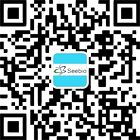APSC 聚苯乙烯(Polystyrene分子量标准品)MSDS
Material Safety Data Sheet
| Product Name: Polystyrene | |
| Product Nos.: PS, PSBR, BRPS, PSLOWKIT, PSMEDKIT, PSHIKIT, PSUHKIT, PSBRKIT | |
| Supplier/Manufacture: | American Polymer Standards Corporation, 8680 Tyler Blvd., Mentor, OH 44060 Phone:440-255-2211 * Fax: 440-255-8397 * Email: apsc@ampolymer.com |
| In Case of Emergency: (440) 255-2211 | |
| Hazard Classification: Combustible Dust | |||||||||||||||||||
| Signal Word: Warning | |||||||||||||||||||
| GHS: Not a dangerous substance according to GHS | |||||||||||||||||||
HMIS Classification:
|
NFPA Rating:
|
||||||||||||||||||
| Potential Health Effects: | |||||||||||||||||||
| Inhalation: May be harmful if inhaled. May cause respritory tract irritation. | |||||||||||||||||||
| Skin: May be harmful if absorbed through skin. May cause skin irritation. | |||||||||||||||||||
| Eyes: May cause eye irritation. | |||||||||||||||||||
| Ingestion: May be harmful if swallowed. | |||||||||||||||||||
| Substance/Mixture: Substance | CAS No.:9003-53-6 |
| Chemical Name:Polystyrene | Synonyms:PS, PSBR, BRPS, Vinyl Polymer |
| Description of Necessary First-Aid Measures: | |
| Inhalation: | Move person to fresh air; if effects occur, consult a physician |
| Skin: | Wash skin with plenty of water. Seek first-aid or medical attentions as needed. If molten material comes in contact with skin, do not apply ice but cool under ice water of running stream of eater. DO NOT attempt to remove the material from skin. Removal could result in severe tissue damage. Seek medical attention immediately. Suitable emergency safety shower facility should be immediately available |
| Eyes: | Flush eyes thoroughly with water for several minutes. Remove contact lenses after the initial 1-2 minutes and continue flushing for several additional minutes. If effects occur, consult a physician, preferably an ophthalmologist. |
| Ingestion: | If swallowed, seek medical attention. May cause gastrointestinal blockage. Do not give laxatives. Do not induce vomiting unless directed to do so by medical personnel. |
| Description of Symptoms/Effects (both acute and delayed) & Symptoms of Overexposure: | |
| Inhalation: | No known significant effects of critical hazards. No specific data regarding symptoms of overexposure. |
| Skin: | No known significant effects of critical hazards. No specific data regarding symptoms of overexposure. |
| Eyes: | No known significant effects of critical hazards. No specific data regarding symptoms of overexposure. |
| Ingestion: | No known significant effects of critical hazards. No specific data regarding symptoms of overexposure. |
| Indication of Immediate Medical Attention & Special Treatment Needed, If Necessary: | |
| Note to Physician: | Treat symptomatically. Contact poison treatment specialist immediately if large quantities have been ingested or inhaled. |
| Specific Treatments: | No specific treatment |
| Protection of First-Aiders: | No action shall be taken involving any personal risk or without suitable training. It may be dangerous to the person providing aid to give mouth-to-mouth resuscitation. |
| Suitable Extinguishing Media: | Use dry chemical powder |
| Unsuitable Extinguishing Media: | Do not use water jet. |
| Specific Hazards Arising from the Chemical: | Carbon oxides, Acrolein |
| Hazardous Thermal Decomposition Products: | Fine dust clouds may form explosive mixtures with air. |
| Special Protective Actions for Fire-Fighters: | Promptly isolate the scene by removing all persons form the vicinity of the incident if there is a fire. No action shall be taken involving any personal risk or without suitable training. Move containers from fire area if this can be done without risk. Use water spray to keep fire-exposed containers cool. |
| Special Protective Equipment for Fire-Fighters: | Fire-Fighters should wear appropriate protective equipment and self-contained breathing apparatus (SCBA) with a full face-piece operated in positive pressure mode. |
| Personal Precautions, Protective Equipment & Emergency Procedures: | Spilled material may cause a slipping hazard. Avoid dust formation. Keep unnecessary and unprotected personnel from entering the area. Use appropriate safety equipment. For additional information, refer to Section 8: Exposure Controls & Personal Protection. |
| Environmental Precautions: | Prevent from entering into soil, ditches, sewers, waterways and/or groundwater. For additional information, refer to Section 12: Ecological Information. |
| Methods & Materials for Containment & Clean Up: | Contain spilled material if possible. Sweep up. Collect in suitable and properly labeled containers. For additional information, refer to Section 13: Disposal Considerations. |
| Precautions for Safe Handling: | No smoking, open flames or sources of ignition in handling and storage areas. Wear appropriate personal protective equipment (refer to Section 8). Avoid inhalation. Avoid contact with eyes, skin and clothing. Avoid creation of dust. Ensure adequate ventilation. |
| Conditions for Safe Storage: | Keep container tightly closed in a dry and well ventilated place. |
| Exposure Limits: | Contains no substances with occupational exposure limit values. |
| Engineering Controls: | Safety shower and eye bath. Mechanical exhaust required. |
| Personal Protective Measures: | |
| Respiratory: | Respiratory protection is not required. Where protection from nuisance levels of dusts are desired, use type N95 (US) or type P1 (EN 143) dust masks. Use respirators and components tested and approved under appropriate government standards such as NIOSH (SU) or CEN (EU). |
| Hand: | Protective gloves |
| Eye: | Chemical safety goggles |
| Skin: | Personal protective equipment for the body should be selected based on the task being performed and the risk involved. |
| Hygiene Measures: | Wash thoroughly after handling. |
| Appearance: Physical State & Color: | Clear/Yellowish Liquid to White Powder |
| Odor: | Odorless |
| Odor Threshold: | Not Available |
| pH: | Not Available |
| Melting Point: | Not Available |
| Boiling Point: | Not Available |
| Flash Point: | Not Available |
| Evaporation Rate: | Not Available |
| Flammability (solid, gas): | Flammable in the presence of the following material or conditions: open flames, sparks and static discharge and heat. |
| Lower & Upper Flammability/Explosive Limits: | Not Available |
| Vapor Pressure: | Not Available |
| Vapor Density: | Not Available |
| Relative Density: | 1.05 [Water = 1] |
| Solubility: | Insoluble in Water |
| Partition coefficient: n-octanol/water: | Not Available |
| Auto-ignition Temperature: | 427°C (800.6°F) |
| Decomposition Temperature: | Not Available |
| Viscosity: | Not Available |
| Reactivity: | No specific test data related to reactivity available for this product or its ingredients. |
| Chemical Stability: | The product is stable. |
| Possibility of Hazardous Reactions: | Under normal conditions of storage and use, hazardous reactions will not occur. |
| Conditions to Avoid: | None known |
| Incompatible materials: | Oxidizing materials |
| Hazardous Decomposition Products: | Under normal conditions of storage and use, hazardous decomposition products should not be produced. |
| Acute Toxicity | Mouse – 30h – 11,000mg/m3 |
| Oral LD50: | No Data Available |
| Inhalation LC50: | No Data Available |
| Dermal LD50: | No Data Available |
| Skin Corrosion/Irritation: | Prolonged contact is essentially nonirritating to skin. Repeated contact may cause flaking and softening of skin |
| Serious Eye Damage/Irritation: | May cause slight temporary eye irritation. Corneal injury is unlikely. |
| Respiratory or Skin Sensitization: | No Data Available |
| Germ Cell Mutagenicity: | No Data Available |
| Reproductive Toxicity: | No Data Available |
| Teratogenicity: | No Data Available |
| Specific Target Organ Toxicity-Single Exposure: | No Data Available |
| Specific Target Organ Toxicity-Repeated Exposure: | No Data Available |
| Aspiration Hazard: | No Data Available |
| Carcinogenicity | |
| IARC: | No component of this product, present at levels greater than or equal to 0.1% is identified as probable, possible or confirmed human carcinogen by IARC. |
| IARC: | 3– Group 3: Not classifiable as to its carcinogenicity to humans (Styrene, oligomers) |
| ACGIH: | No component of this product, present at levels greater than or equal to 0.1% is identified as probable, possible or confirmed human carcinogen by ACGIH. |
| NTP: | No component of this product, present at levels greater than or equal to 0.1% is identified as probable, possible or confirmed human carcinogen by NTP. |
| OSHA: | No component of this product, present at levels greater than or equal to 0.1% is identified as probable, possible or confirmed human carcinogen by OSHA. |
| Potential Health Effects | |
| Inhalation: | May be harmful if inhaled. May cause respiratory tract irritation. |
| Ingestion: | May be harmful if swallowed. |
| Skin: | May be harmful if absorbed through skin. May cause skin irritation. |
| Eyes: | May cause eye irritation. |
| Toxicity: No Data Available | Persistence & Degradability: No Data Available |
| Bio-accumulative Potential: No Data Available | Mobility in Soil: No Data Available |
| Disposal Methods: | Disposal practices must be in compliance with all Federal, State and Local laws and regulations. DO NOT DUMP INTO ANY SEWERS, ON THE GROUND OR INTO ANY BODY OF WATER. Contact a licensed professional waste disposal service to ensure proper disposal. |
| DOT (US): Not Regulated | IMDG: Not Regulated | IATA: Not Regulated |
| OSHA Hazards: | No known hazards |
| SARA 302 Components: | No chemical in this material are subject to reporting requirements of SARA Title III, Section 302. |
| SARA 311/312 Components: | No SARA Hazardds |
| SARA 313 Components: | This material does not contain any chemical components with known CAS numbers that exceed the threshold (De Minimis) reporting levels establilsed by SARA Title III, Section 313. |
| Right To Know Components: | |
| Masachusetts: | No components of the material are subject to Massachusetts Right to Know Act. |
| New Jersey: | No components of the material are subject to New Jersey Right to Know Act. |
| Pennsylvania: | No components of the material are subject to Pennsylvania Right to Know Act. |
| California Prop 65: | No components found |
| Canada Inventory: | This Material is listed or exempted. |
| Date of Issue: March 28, 2014 | |
| Date of Last Revision/Review: No previous revision/review | |
| DISCLAMER: | For R&D use only. Not for use in Food, Drugs or Cosmetics. The information contained in this MSDS is the most accurate and complete information available to us. APSC expresses or implies no warranty to the information provided and assumes no liability. The material covered in this MSDS is only provided in 1 gram quantities and is not expected to posse any health or environmental risks based on these quantities. |
American Polymer Standards Corporation * 8680 Tyler Blvd. * Mentor, OH 44060 * USA
* Phone: 440-255-2211 * Fax: 440-255-8397
Last Revised: May 13, 2015
* Phone: 440-255-2211 * Fax: 440-255-8397
Last Revised: May 13, 2015
 |
 |
 |
| 官网:www.cxbio.com | 微信服务号:iseebio | 微博:seebiobiotech |
 |
 |
 |
| 商城:mall.seebio.cn | 微信订阅号:seebiotech | 泉养堂:www.canmedo.com |
下一篇:如何让细胞乖乖的死去活来上一篇: 描述聚合物分子量的Mn,Mw和Mz有什么不同?
相关资讯
- JBC:突破!科学家鉴别出机体慢性炎症和糖尿病发生的关键分子关联!
- Seebio品牌 HBR-H1阻断剂
- Nature:重大发现!首次揭示噬菌体利用细胞核样区室保护自身基因组免受CRISPR核酸酶切割
- Cell重磅:骨关节炎研究里程碑!82万人样本揭示众多新遗传风险因素
- Nature重磅:这种致死率最高的恶性肿瘤,或将迎来精准治疗时代
- 重组蛋白和链酶亲和素(Streptavidin, SA)
- 神奇!科学家发明接骨黑科技,「伤筋动骨100天」或成为历史 | 临床大发现
- Carrageenan 卡拉胶 - Elicityl生物质提取半乳聚糖产品(2)
- Cell Rep:新研究揭示神经胶质瘤的药物靶点
- 年轻人和苗条人士注意了!2型糖尿病来袭








